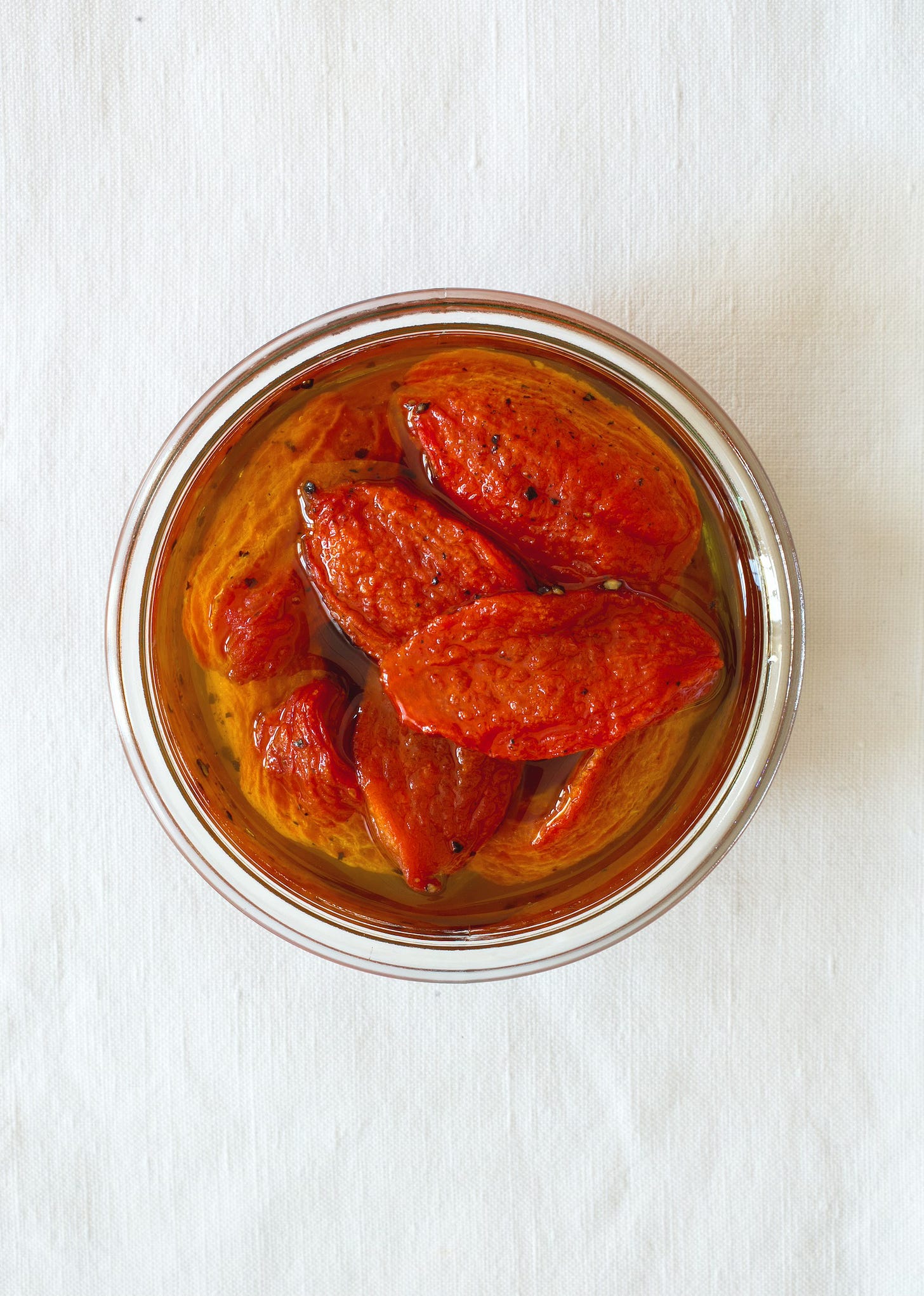The ingredient
The standard-issue tomato needs support. Like someone raised to conform and then being told it’s okay to ‘be yourself!’ they blossom into the best version of themselves when treated with love.
The aim
Deep down past all the defense mechanisms against transport and storage (thick, hardy skins and unripe flesh) there can be flavour, it just needs to be coaxed out. This is an extra set of steps that needs to happen before using the tomato.
How you get there
There are three main steps: ripening, peeling and seeding, and slow roasting. Applying steps one and two or all three steps depends on how the tomato is going to be used.
1. Buy the reddest possible tomatoes, release from any packaging and line up on a windowsill so they may catch some sun and ripen to their full potential.
2. Strip the tomatoes of their skins, jelly and seeds. Stop after this step if a fresh tomato is required – like for a salad or salsa or on bruschetta.
3. Go one step further and slow roast the tomato flesh to concentrate flavour and colour and to soften their firm (sometimes woolly) texture if using the tomato for a sauce, sandwich or a tart.
Core technique: peeling and seeding
Have a large bowl of ice water ready and start boiling some water to fill another large bowl. (The bowl needs to be big enough and the water in abundant supply so the tomatoes are fully submerged.)
Using a sharp knife, score the bottom of each tomato with a cross.
Place the scored tomatoes in a large bowl and cover with plenty of freshly boiled water so they are completely covered.
How long you leave them depends on how ripe they are. If your tomatoes are on the riper side, try leaving them for 12 seconds. If they are less ripe tomatoes try leaving them for up to 30 seconds. Pull at the edge of the scored skin to get a feel for when they are ready – the skin should pull away easily.
What you’re trying to avoid: leaving them for so long that the outer flesh cooks and becomes fuzzy.
As soon as the skin starts releasing, immediately plunge the tomatoes into the bowl of ice water. Peel off the skins starting at the cross score.
Place a sieve over another smaller bowl. Remove the core and cut the tomatoes into quarters. Working over the sieve, remove the pulp and seeds. Freeze strained juice for adding to tomato sauces or soups or stews.
Building block: slow-roasted tomatoes
Preheat the oven to 80°C with the rack in the middle. Toss the peeled and seeded tomato quarters with just enough extra virgin olive oil to coat and season with salt and pepper. Arrange them, cut-side facing down and at least 2cm apart, on a tray lined with foil or baking paper. Roast for 3 hours. Remove from the oven and cool. Transfer to a sterilized airtight jar, cover with a little extra-virgin olive oil and store in the fridge for up to one week.
How to use slow roast tomatoes
Although the deseeding tempers a standard-issue tomato’s acidity, the flavour profile is still unlikely to match the sweetness of an heirloom tomato. The slow roasting accentuates umami and turns the standard-issue tomato intensely savoury, which is useful to know when deciding how to use them.
Here are some thoughts.
Toss through pasta – if there are enough strained juices from the deseeding, use those to make the butter-emulsified sauce in this fresh tomato pasta and chop the slow-roasted tomatoes to use instead of the chopped fresh heirlooms.
Serve with creamy scrambled eggs as a savoury element instead of bacon.
Toss through a salad of wild rocket dressed with garlicky vinaigrette.
Use as a base for a smooth roast tomato sauce or soup.
Add to sandwiches or as a topping on pizza. (My current favourite is a thick slice of fresh wheat sourdough topped with creamed cottage cheese, slow-roasted tomato petals and a few drops of Bandon’s homemade hot sauce.)






